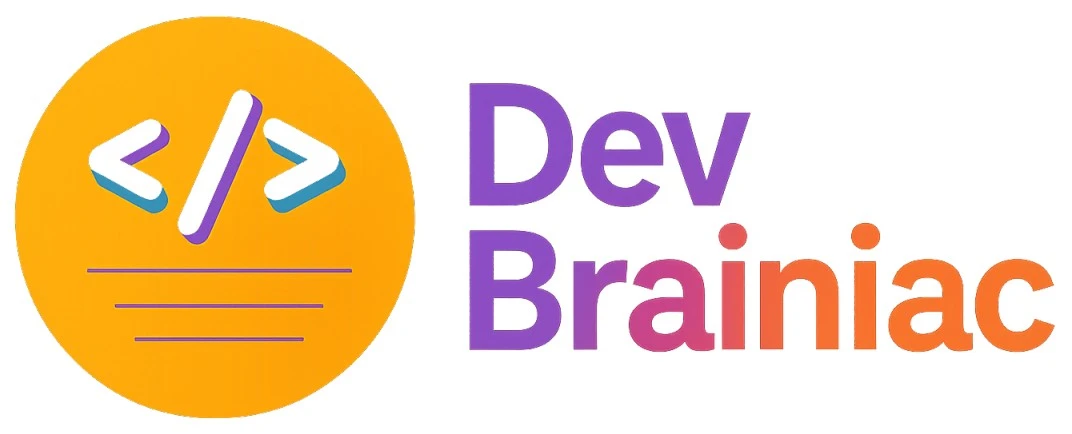Q1.
What is the primary goal of Artificial Intelligence?
1
1
To create systems that require human input to operate
2
To develop systems that simulate human intelligence processes
3
To replace all jobs currently performed by humans
4
To enhance computer processing speeds
Q2.
What is the difference between Narrow AI and General AI?
1
1
Narrow AI performs specific tasks
2
General AI performs specific tasks
3
Narrow AI has the capability to perform any intellectual task
4
General AI is currently in widespread use
Q3.
Which of the following best describes Narrow AI?
1
1
It can perform any intellectual task that humans can.
2
It is designed to perform specific tasks.
3
It has human-like reasoning and understanding.
4
It can learn and adapt like a human.
Q4.
Which of the following is a characteristic of General AI?
1
1
It is capable of solving problems outside its pre-programmed tasks.
2
It is widely used in real-world applications.
3
It can only perform one specific task.
4
It can not learn and adapt.
Q5.
Which of the following is an example of Narrow AI?
1
1
A robot that can clean your house autonomously
2
An AI system that can play chess at a world-class level
3
A machine that can understand and process all human languages
4
An AI that can think and reason like a human
Q6.
What is supervised learning?
1
1
Learning without labeled data
2
Learning with labeled data
3
A method where machines learn by trial and error
4
A method that requires no human interaction
Q7.
Which statement best differentiates Narrow AI and General AI?
1
1
Narrow AI can only be used for games, while General AI is used for real-world applications.
2
General AI can solve specific problems, while Narrow AI can solve any intellectual problem.
3
Narrow AI is designed for a specific task, while General AI can handle any task like a human.
4
General AI is currently widely used, whereas Narrow AI is still theoretical.
Q8.
In which year was the term "Artificial Intelligence" first coined?
1
1
1945
2
1956
3
1995
4
1960
Q9.
Which of the following is NOT a type of AI as defined by capabilities?
1
1
Narrow AI
2
General AI
3
Supervised AI
4
Super AI
Q10.
Which of the following is an example of General AI?
1
1
IBM's Watson
2
Siri
3
Google's AlphaGo
4
None of the above
Q11.
In Python, which library is commonly used for AI tasks such as Natural Language Processing (NLP)?
1
1
NumPy
2
NLTK
3
Pandas
4
SciPy
Q12.
Your AI system is making decisions based on incorrect historical data. What is the most likely cause?
1
1
Data bias
2
Overfitting
3
Algorithm complexity
4
Lack of data
Q13.
What is the first step in the problem-solving process in AI?
1
1
Define the problem
2
Develop an algorithm
3
Test the solution
4
Implement the solution
Q14.
Which AI technique involves breaking down a problem into smaller sub-problems?
1
1
Greedy algorithm
2
Divide and conquer
3
Heuristic search
4
Depth-first search
Q15.
What is the primary purpose of using a search algorithm in AI problem-solving?
1
1
To store large datasets efficiently
2
To randomly select possible solutions
3
To systematically explore possible actions to reach a goal
4
To enhance the graphical display of the system
Q16.
Which of the following is a disadvantage of using brute force search in AI?
1
1
It is not guaranteed to find a solution
2
It requires domain-specific knowledge
3
It is computationally expensive
4
It only works for small datasets
Q17.
What role does backtracking play in AI problem-solving?
1
1
It avoids revisiting already explored paths
2
It guarantees finding the optimal solution
3
It simplifies the problem
4
It is used to store solutions
Q18.
Which Python library can be used to visualize search algorithms applied to a problem?
1
1
Pandas
2
Scikit-learn
3
matplotlib
4
TensorFlow
Q19.
Which of the following would be considered an ethical concern in AI?
1
1
High-dimensional feature extraction
2
Black-box model interpretation
3
Low generalization error
4
Algorithmic bias in decision-making
Q20.
What is "catastrophic forgetting" in the context of neural networks?
1
1
Overfitting to noise in training data
2
Loss of weights due to vanishing gradients
3
Model convergence to a suboptimal solution
4
Forgetting old knowledge when learning new information
Q21.
The name of the Artificial Intelligence system developed by Daniel Bobrow was?
1
1
BACON
2
SIMD
3
STUDENT
4
None of the above
Q22.
Which of the following are appropriate levels for a knowledge-based AI agent?
1
1
Knowledge Level
2
Logical Level
3
Implementation Level
4
All of the above
Q23.
Which of the following are informed search methods?
1
1
Best First Search
2
A* Search
3
Memory Bound Heuristic Search
4
All of the above
Q24.
Which of the following are valid 3D image processing techniques?
1
1
Motion
2
Texture
3
Contour
4
All of the above
Q25.
Which of the following is not an application of artificial intelligence?
1
1
Computer Vision
2
Natural Language Processing
3
Database Management System
4
Digital Assistants
Q26.
Which of the following is the common language for Artificial Intelligence?
1
1
Python
2
Java
3
Lisp
4
C#
Q27.
Which of the following search method takes less memory space?
1
1
Best First Search
2
Depth First Search
3
Linear Search
4
Optimal Search
Q28.
Which of the following symbols in AI are logical symbols?
1
1
Negation
2
Conjunction
3
Implication
4
All of the above
